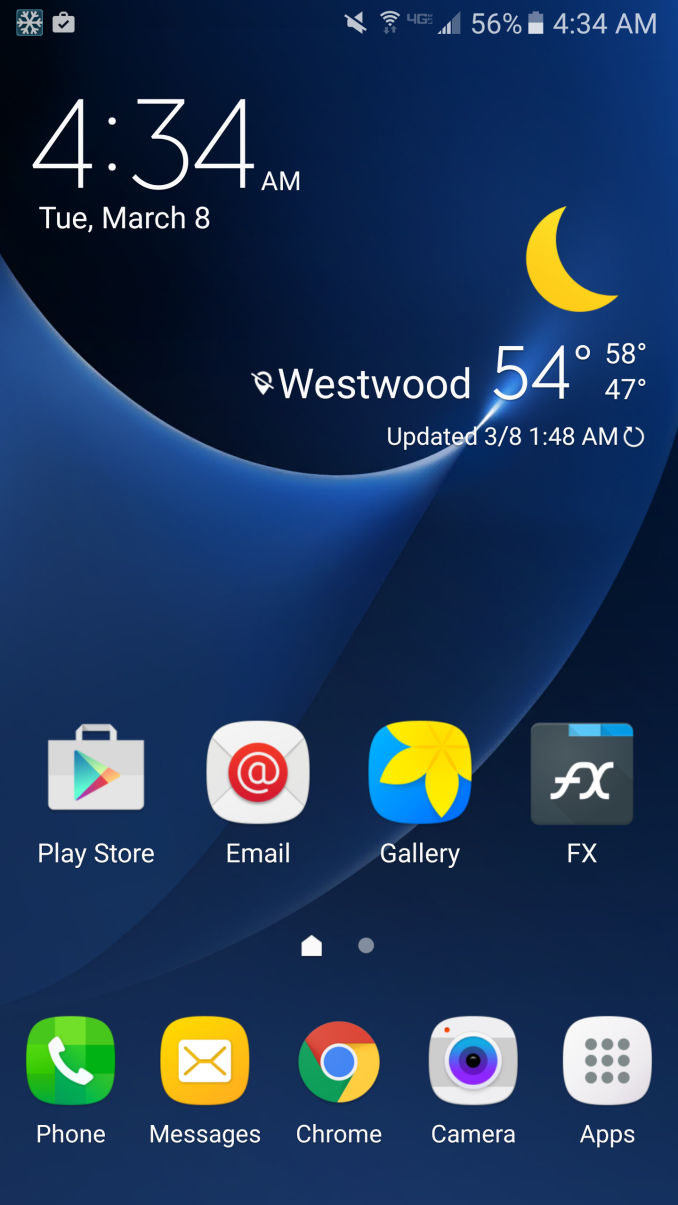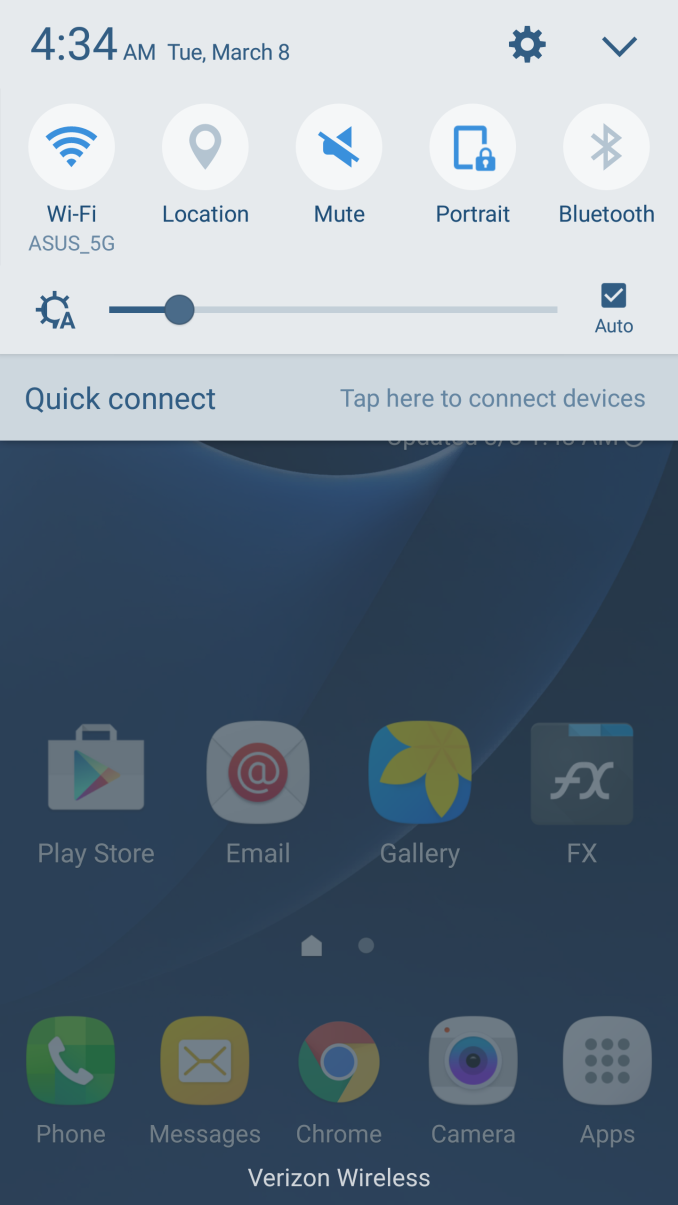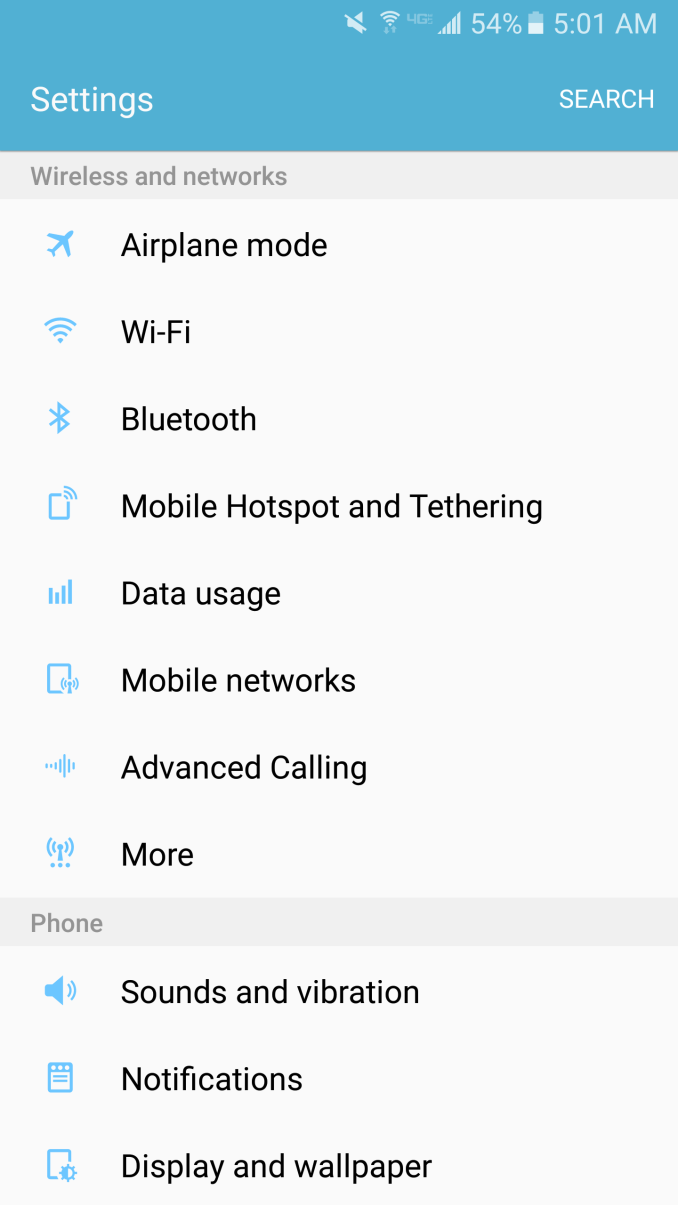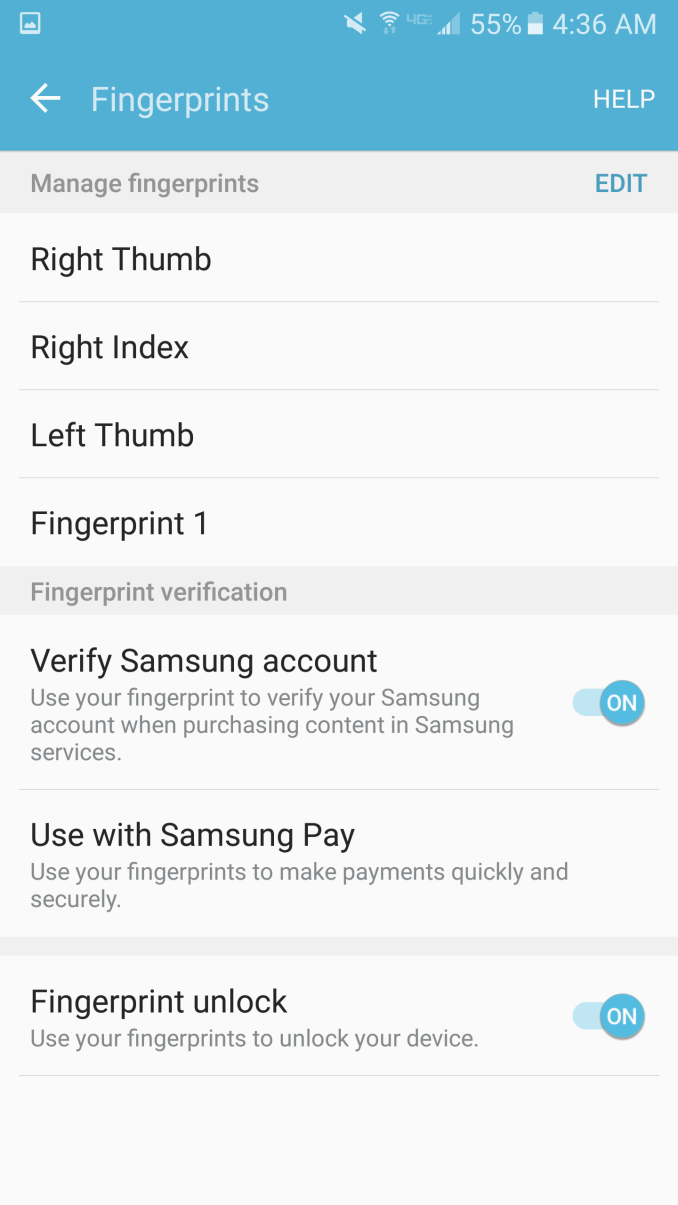The Samsung Galaxy S7 & S7 Edge Review, Part 1
by Joshua Ho on March 8, 2016 9:00 AM ESTSoftware UX
As is always the case, there’s a perpetual debate over the role of the OEM when it comes to Android devices. For better or worse, Samsung seems to believe that they need to add their own framework and UI over Android. To some extent, I suspect that most users are going to find stock Android to be rather spartan out of the box, so it does make sense for OEMs like Samsung to continue adding their own custom applications and frameworks to help differentiate themselves from the competition.
With the Galaxy S5, it was evident that Samsung had dramatically changed their design direction for TouchWiz, but I would argue that their design aesthetic still wasn’t quite perfect, and performance wasn’t completely there either. With the Galaxy S6, Samsung had gotten closer to the mark in some ways, but the continued use of excessively neon colors just made parts of the UI feel off at times, and performance still wasn’t perfect.
With the Galaxy S7, performance has improved noticeably, but it’s really hard for me to say whether this is because Samsung has improved their codebase, or if a faster SoC is just making it harder to notice areas in need of optimization. At any rate, while the Galaxy S7 isn’t perfectly smooth - dropping frames now and then - it is sufficiently performant that you’re not going to find distracting lag.
The default theme of the Galaxy S7 continues to feel pretty similar to the Galaxy S6, so for the most part things are acceptable here, but the use of color is still a bit excessive as a number of icons still use neon colors rather than more neutral pastel colors. Of course, the theme store now has a number of Material Design themes, which greatly improve the situation. I installed one pretty much immediately, which helps make the device feel a lot better in everyday use. However, I’m still of the opinion that this is something that a user shouldn’t need to do out of the box, so this is an area where Samsung can improve.
The other features that Samsung touted for the Galaxy S7 are interesting, but I’m not really sure they’re all that well executed. Always-On Display is nice to have, but for some reason it's quite reluctant to turn off the display when the ambient light sensor and proximity sensor are covered. As a result I turned it off as it’s clearly going to be contributing to idle battery drain in situations where it shouldn’t.
I also found that the fingerprint scanner is pretty much identical to the one in the Galaxy S6, which isn’t entirely surprising as both identify themselves as a Synaptics fingerprint scanner. Both still seem to be quite sensitive to the initial training period and in my experience won’t really work all that well if you don’t cover your entire fingerprint effectively during that period.
Other than this, TouchWiz doesn’t really stand out in any way as of now. Of course, Samsung Pay will be interesting for me to try as I still regularly run into terminals that don’t support NFC in any shape or form, but I haven’t really been able to spend much time testing Samsung Pay yet. I don’t really find TouchWiz to be a bad thing at this point, but I’m not really sure it’s a good thing either. With a serious emphasis on optimization and a major aesthetic overhaul, it’s entirely possible that I could find myself saying quite differently in the near future, but for now if you found the Galaxy S6 and Note 5 OEM UIs to be usable you’ll find the Galaxy S7 to be usable as well.















202 Comments
View All Comments
buxe2quec - Tuesday, March 8, 2016 - link
And I'm still wondering... how is it possible that years after various websited emphasized the better alignment and design of the connectors and perforations of the iPhone, Galaxies are still aligning them with no care at all? check that top side with the slots and holes thrown there randomly and that bottom side with the four holes (or groups thereof) aligned in FOUR different ways.But hey at least Apple supporters won't say they are copying everything...
Dobson123 - Tuesday, March 8, 2016 - link
I couldn't care less.name99 - Tuesday, March 8, 2016 - link
Fair enough. But don't then complain that it's "unfair" when Apple sucks up 80% of the profits in this sector. It's attention to details (ALL details) that allows a company to charge more...lilmoe - Tuesday, March 8, 2016 - link
Attention to detail hardly has anything to do with the port alignment at the bottom of the phone, and more so with the antenna bands on the back and the cheap choice of aluminum alloys in previous models (changed only after "bending" to public pressure, pun intended).A nice finish =/= quality. A polished piece of cheap glass looks better than a rough diamond.
Most of Apple's attention to detail goes to media, perception, image, supply chain, and money making business models. Well, at least more so than their attention to hardware.
You have good points here and there, but your fanboyish attitude ruins the good parts...
theduckofdeath - Tuesday, March 8, 2016 - link
Exactly. And there is a pretty good reason why the SD/SIM slot is on the side on the top. It can't be in the same location as the camera's. Apple have displaced the camera to a corner, that's not very symmetric in my eyes. And like you, I've never been a fan of those plastic separators on the back on all-metal phones.End of the day, manufactures are always doing deliberate design differentiations to make sure their hardware is distinguishable from a distance. Most people can easily identify a Samsung phone when someone's using it, simply because they've stuck to the same camera design/location since the Galaxy S2.
tipoo - Tuesday, March 8, 2016 - link
I think you mean this?http://www.imore.com/difference-apple-samsung-indu...
That was about the GS6 and only just started making its rounds, after Samsung finally tried to make nicer designs. I mean, I agree with you, it's such a bizarre miss, but when you say "years and years", it's really, "year", or less.
grayson_carr - Wednesday, March 9, 2016 - link
Well if the Galaxy phones had bezels the size of Texas like the iPhones, I'm sure they could align the ports better because they'd have more room to work with.syxbit - Tuesday, March 8, 2016 - link
"While not quite going from zero to hero, Qualcomm has come close, and that definitely deserves some credit."I disagree. Giving them credit because of the large improvement over the awful SD810 doesn't make sense.
Instead of a comparison to last years garbage, give them credit for how SD820 performs compared to todays best SoCs. It turns out SD820 isn't really leading that much. It's mostly still behind a year old Apple chip.
whiteiphoneproblems - Tuesday, March 8, 2016 - link
"Always-On Display is nice to have, but for some reason it only polls the ambient light sensor, so the display won’t actually turn off in your pocket."This is strange and disappointing. I wonder why it does not use the proximity sensor.
whiteiphoneproblems - Tuesday, March 8, 2016 - link
...and as a stab at answering my own question: I assume constantly polling the prox sensor would cause a greater battery hit than simply leaving the display on all the time (including in pocket)?Would be interesting to chart battery life with AOD on vs. off (in some kind of controlled way, of course).